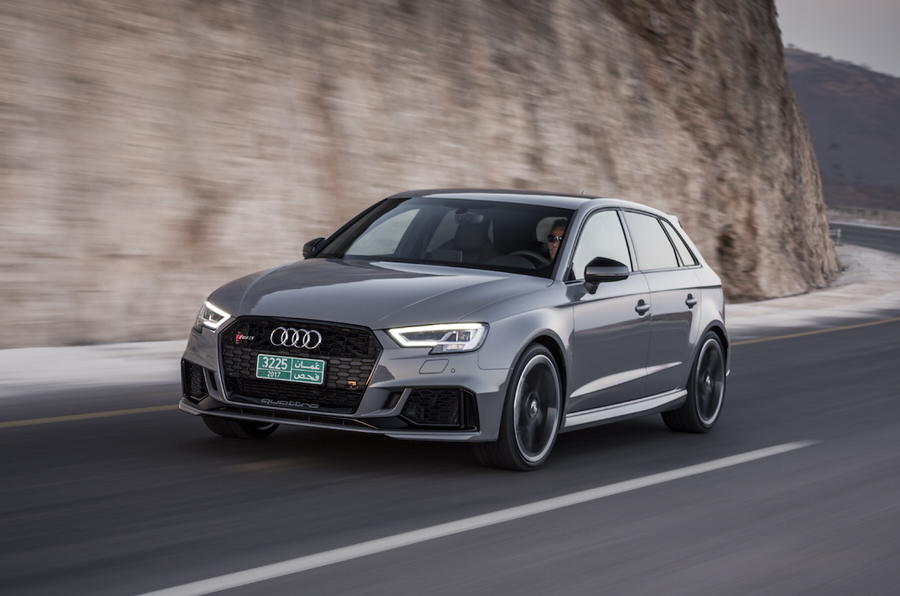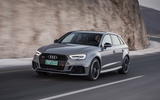What is it?
Sister car to the mechanically identical RS3 Saloon in an extended line-up of models from Audi Sport, the much anticipated updated RS3 superhatch has received a number of key mid-life upgrades that are claimed to both enhance its dynamic prowess and, more crucially, make it more entertaining to drive.
The big news with the newly reworked four-wheel-drive Mercedes-AMG A 45 4Matic rival revolves around its turbocharged of the 2.5-litre five-cylinder direct-injection petrol engine, which has been thoroughly re-engineered, giving it more power and reducing its weight by 26kg, therefore improving the RS3's power-to-weight ratio and weight distribution.
Its the same transversely-mounted engine applied in the second-generation TT RS in 2016, so it's not entirely new. Changes cited by Audi Sport development boss, Stephen Riel, include the adoption of an aluminium crankcase in place of the old iron one. Plus, a new dual injection process and Audi’s patented valve-lift system in a combination claimed to increase combustion efficiency as well as a revised exhaust system with a larger volume muffler and adjustable flaps for an even more determined exhaust note.
With a larger-volume turbocharger providing a relatively low 1.35bar of boost pressure, the new five-cylinder kicks out an extra 32bhp at 394bhp between 5850 and 7000rpm. Torque is also up, but only marginally, rising from a previous 343 to 354lb ft on a 225bhp wider range of revs between 1700 and 5850rpm.
This endows the new RS3 Sportback with 18bhp and a scant 4lb ft more than the smaller turbocharged 2.0-litre four-cylinder engine that powers the A45 4Matic. It is also 29bhp and 11lb ft more than that delivered by the larger turbocharged 3.0-litre six-cylinder engine used by the BMW M2.
The RS3's increased reserves are channelled through an updated version of the standard S tronic seven-speed automatic transmission. This receives changes to its drive element at the propeller shaft in a move claimed to reduce its weight by 2.0kg over the earlier version of the dual-clutch unit. Offering the choice of either manual or automatic modes, it comes with steering wheel-mounted shift paddles and a launch control function.
The RS3's electro-hydraulic multi-plate-clutch quattro four-wheel drive system has also been revised with new software mapping. It is now capable of delivering between 50 and 100% of drive to the rear wheels.
Underpinning the new RS3 Sportback is a reworked version of its predecessor’s suspension, with MacPherson struts up front and an independent four-link arrangement at the rear. It is lowered by 25mm over the lesser A3 Sportback and can be optioned with an RS Sport Suspension Plus package that brings magnetically-operated variable damping.
The RS3's standard 19in wheels come shod with 235/35 R19 Pirelli P-Zero tyres. Audi’s Drive Select system offers the choice of four driving modes: Comfort, Auto, Dynamic and Independent.
You’ll never confuse the latest RS3 Sportback for the A3 Sportback. Among its more distinctive styling touches are a front bumper with larger air ducts, a high-gloss black grille with a honeycomb insert, flared front wheel arches, black mirror housings and wider sills. At the rear, it has a larger spoiler and a new bumper with an integrated diffuser and oval tailpipes.



















Join the debate
Add your comment
Ride
LOL! So when it first came
Quality, practicality,